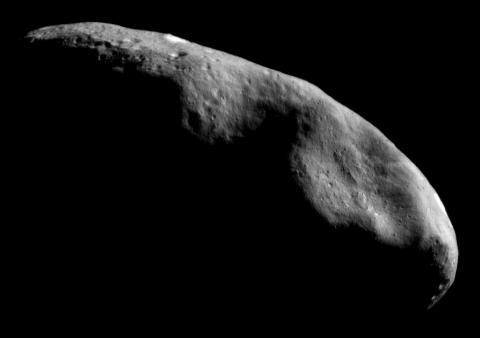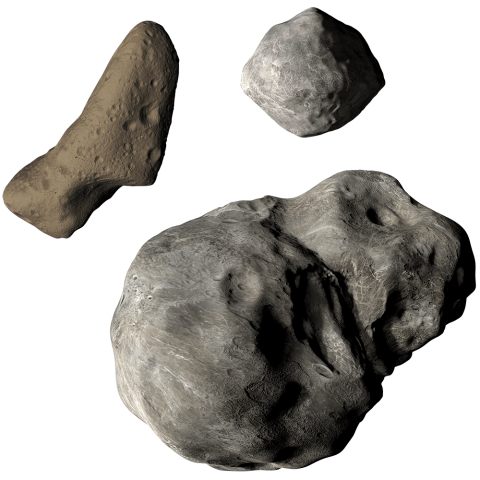Results and Expectations
Recovering from a year’s delay in reaching Eros during its first attempt at orbit insertion, NEAR turned out to be successful far beyond its original mission plan.
After a year in orbit around Eros, on Feb. 12, 2001, NEAR Shoemaker made a gentle, picture-perfect three-point landing on the tips of two solar panels and the bottom edge of the spacecraft body. But the mission wasn’t finished yet; to the amazement of the mission team and millions of observers around the world who were following the descent, the touchdown was so elegant that the craft was still operating and sending a signal back to Earth even after landing.
Jumping at the chance to get “bonus science” from the spacecraft, which had already collected 10 times more data than originally planned, the mission team reconfigured the spacecraft to collect composition readings for 10 more days — gathering data to help it classify Eros and determine the relationship between the asteroid and meteorites that have fallen to Earth.
NEAR Shoemaker now rests silently on Eros, having succumbed to the cold of deep space nearly two decades ago — and setting a high bar for low-cost planetary exploration that guides missions today.
Mission Facts
Launch
February 17, 1996
Flybys
Asteroid Mathilde, June 27, 1997; Earth, January 23, 1998; Asteroid Eros, December 23, 1998
Eros Orbit Insertion
February 14, 2000
Eros Landing
February 12, 2001
Mission End
February 28, 2001
Project Manager
Thomas Coughlin, Johns Hopkins APL
Mission Manager
Robert Farquhar, Johns Hopkins APL
Project Scientist
Andrew Cheng, Johns Hopkins APL
Program Executive
Anthony Carro, NASA Headquarters
Program Scientist
Thomas Morgan, NASA Headquarters





